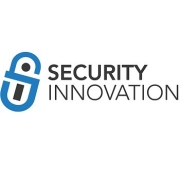Application Security Training is essential for equipping developers and security teams with the knowledge to identify, prevent, and mitigate security vulnerabilities in applications. It covers best practices, compliance requirements, and real-world threats.
This training focuses on educating professionals about the latest security threats and how to protect against them. Training programs offer comprehensive coverage of topics like secure coding, threat modeling, and vulnerability assessment. Hands-on labs and interactive modules enhance the learning experience, making it easier to apply concepts in real-world scenarios.
What are the critical features?In finance, Application Security Training is implemented to safeguard sensitive data and prevent fraud. In healthcare, it ensures patient information remains confidential and compliant with regulations like HIPAA. Tech companies leverage it to protect intellectual property and maintain customer trust.
Organizations benefit from Application Security Training by mitigating risks, ensuring compliance, and fostering a culture of security awareness among employees.
| Product | Market Share (%) |
|---|---|
| Security Innovation Application Security Training | 36.5% |
| Secure Code Warrior Learning Platform | 26.6% |
| Codebashing | 10.7% |
| Other | 26.200000000000003% |










Application Security Training software is designed to educate developers, testers, and other IT professionals about the best practices and techniques to secure applications from potential threats and vulnerabilities. This software helps organizations enhance their overall security posture by training employees on various aspects of application security.
Several types of Application Security Training software are available in the market, each with unique features and capabilities.
1. Interactive e-learning platforms: These platforms provide interactive training modules that cover a wide range of application security topics. They often include quizzes, simulations, and hands-on exercises to engage learners and reinforce their understanding of secure coding practices.
2. Virtual labs: Virtual lab environments allow users to practice application security techniques in a safe and controlled environment. These labs provide hands-on experience with real-world scenarios, enabling learners to identify vulnerabilities, exploit them, and learn how to mitigate them effectively.
3. Secure coding tools: Application Security Training software includes secure coding tools that help developers write secure code by identifying potential vulnerabilities and suggesting remediation techniques. These tools often integrate with popular Integrated Development Environments (IDEs) and provide real-time feedback to developers as they write code.
4. Threat modeling tools: Threat modeling is an essential part of application security, and some training software includes tools that help users understand and implement threat modeling techniques. These tools assist in identifying potential threats, assessing their impact, and prioritizing mitigation efforts.
5. Capture the Flag (CTF) challenges: CTF challenges are gamified exercises that allow users to test their application security skills in a competitive environment. These challenges often simulate real-world scenarios and require participants to identify vulnerabilities, exploit them, and solve security-related puzzles.
6. Compliance training modules: Some Application Security Training software includes modules specifically designed to educate employees on compliance requirements, such as GDPR or HIPAA. These modules help organizations ensure that their applications meet the necessary regulatory standards.
7. Reporting and analytics: Many Application Security Training software solutions provide reporting and analytics capabilities to track learners' progress, identify knowledge gaps, and measure the effectiveness of the training program. These features help organizations assess the overall security awareness and readiness of the workforce.
In conclusion, Application Security Training software comes in various forms, each catering to different aspects of application security. Whether it's interactive e-learning platforms, virtual labs, secure coding tools, or CTF challenges, organizations can choose the software that best suits their training needs and helps them build a strong application security culture.
Application Security Training software is a specialized tool designed to educate developers and IT professionals on best practices for secure software applications. It provides a comprehensive training program that covers various aspects of application security, including secure coding practices, vulnerability identification, and mitigation techniques. Here is an overview of how this software works:
1. Content Creation: The software allows security experts to create training content, including modules, lessons, and quizzes. This content is customizable to suit specific organizational requirements and encompasses a broad spectrum of application security subjects.
2. Learning Management System (LMS): The software incorporates a learning management system that enables administrators to manage and deliver training content to learners. Key features of the LMS include user management, progress tracking, and reporting.
3. Interactive Training Modules: The software offers interactive training modules that engage learners through various multimedia elements, such as videos, interactive exercises, and simulations. Learners can access these modules at their own pace, allowing flexible learning schedules.
4. Secure Coding Practices: The software emphasizes secure coding practices, teaching developers how to write code that is resistant to common vulnerabilities, such as SQL injection, cross-site scripting, and buffer overflows. It provides guidelines and examples to help developers understand and implement secure coding techniques.
5. Vulnerability Identification: The software educates learners on how to identify potential vulnerabilities in software applications. It covers techniques for manual code review, automated scanning, and penetration testing to detect security weaknesses.
6. Mitigation Techniques: The software teaches learners how to mitigate identified vulnerabilities effectively. It provides guidance on implementing security controls, such as input validation, output encoding, and access control mechanisms.
7. Assessments and Quizzes: The software includes assessments and quizzes to evaluate learners' understanding of the training material. These assessments help identify areas where learners may need additional training or support.
8. Reporting and Progress Tracking: The software generates reports that provide insights into learners' progress, completion rates, and assessment scores. Administrators can use these reports to monitor the effectiveness of the training program and identify areas for improvement.
In summary, Application Security Training software offers a structured and interactive approach to educate developers and IT professionals on application security. It covers secure coding practices, vulnerability identification, and mitigation techniques, providing a comprehensive training program to enhance the security posture of software applications.